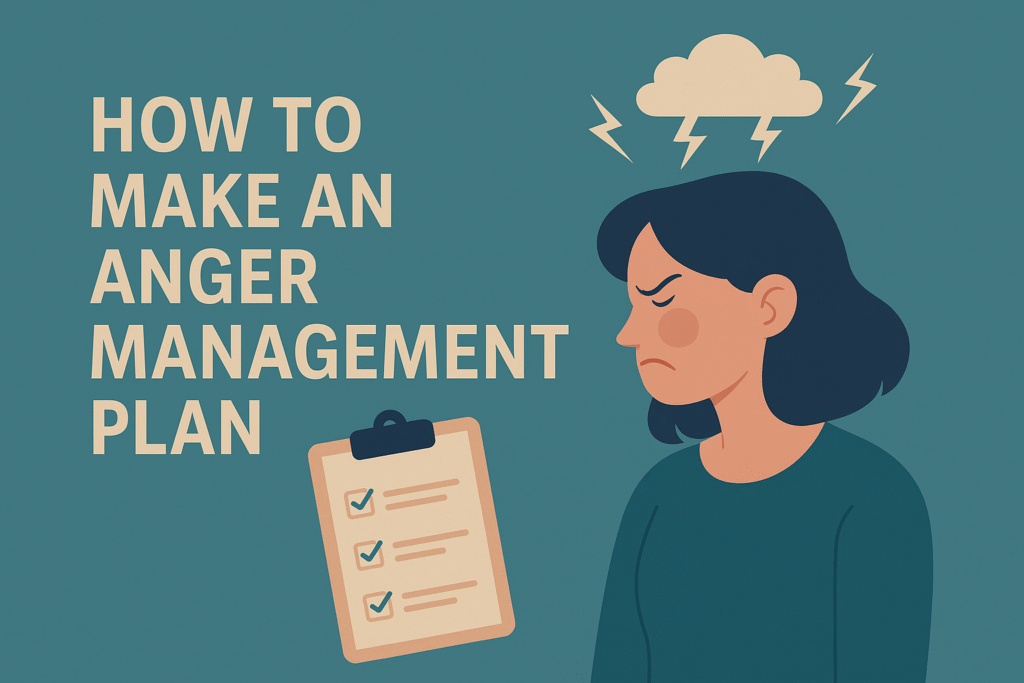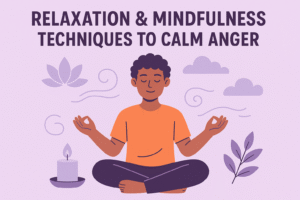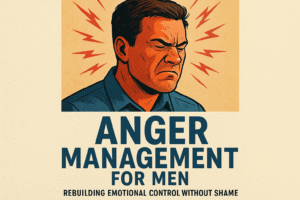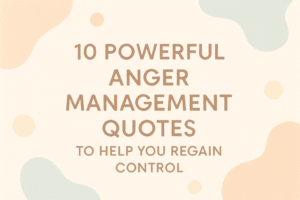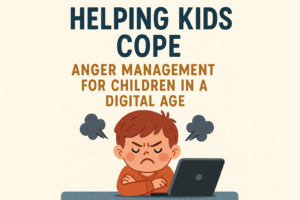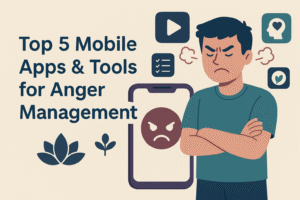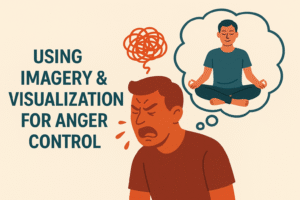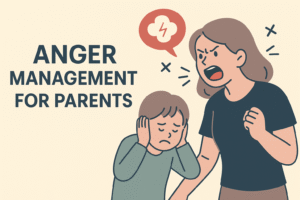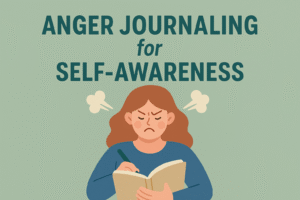Managing anger isn’t just about calming down in the heat of the moment. It’s about building a structured approach to understand your triggers, learn healthy responses, and track long-term emotional growth. A well-designed anger management plan can help you move from reacting impulsively to responding with intention and clarity.
Whether you’re working with a therapist or just starting your self-help journey, this guide walks you through creating a personalized anger management plan that fits your daily life and long-term goals.
Key Components of an Anger Management Plan
An effective anger management plan doesn’t need to be complicated. But it should include the core elements that help you recognize your patterns and shift your emotional responses.
1. Identify Your Triggers
Begin by listing specific people, situations, or thoughts that tend to provoke anger. Triggers can include:
- Being interrupted while speaking
- Feeling ignored or disrespected
- High-stress situations or deadlines
- Specific phrases or tones from others
Recognizing patterns in your reactions helps you anticipate and prepare for them in the future.
2. Choose Your Coping Tools
Different tools work for different people. Your plan should include calming strategies you can use before, during, and after angry moments.
Examples:
- Deep breathing or box breathing
- Walking away from the situation
- Writing in a journal
- Using grounding techniques (e.g., 5-4-3-2-1 sensory scan)
- Practicing self-talk like, “I’m feeling angry, and I can pause.”
3. Reflection & Self-Awareness
Include time for reflection in your plan. This might mean writing about the situation after it happens, asking:
- What triggered me?
- What was I thinking at the time?
- What could I do differently next time?
Reflection turns emotional moments into learning experiences.
Setting SMART Goals for Anger Management
Vague goals like “I want to stop getting angry” can be hard to measure. Instead, use the SMART goal format—Specific, Measurable, Achievable, Relevant, and Time-bound—to create focused progress markers.
Example SMART Goals:
- “I will use deep breathing for 2 minutes whenever I feel my heart rate increase due to frustration, three times a week.”
- “I’ll complete a reflection journal entry after every argument for the next 30 days.”
- “I will talk to my partner calmly when I feel irritated, without yelling, at least 80% of the time this month.”
Setting clear goals builds confidence and structure around emotional progress.
Integrating Therapist Input
If you’re working with a mental health professional, like those at youronlinepsychologist, your plan should reflect your therapy sessions. Your therapist can help you:
- Pinpoint cognitive distortions (unhelpful thought patterns)
- Introduce techniques like CBT or mindfulness
- Offer external accountability and support
- Adjust goals based on your progress
Your plan is most effective when it evolves with you, guided by insight from someone trained in emotional regulation.
If you’re not in therapy, you can still benefit from resources like workbooks, mobile apps, or structured online programs that mirror therapeutic tools.
Tracking Improvement Over Time
Anger management is a long-term process. Keeping track of your progress helps you stay motivated and honest with yourself.
Ways to Track Progress:
- Journaling: Record when anger arises, what helped, and what didn’t.
- Mood tracking apps: Log intensity and frequency of emotional flare-ups.
- Weekly check-ins: Set a time each week to review goals and challenges.
- Scorecards: Use a 1–10 rating system for how you handled each situation.
Over time, you’ll notice patterns improving, even if progress feels slow in the moment.
Sample Anger Management Plan Template
Here’s a simplified framework you can customize to fit your needs.
Name:
Start Date:
1. My Common Triggers
- Being interrupted
- Work deadlines
- Feeling judged
- Traffic
2. My Early Warning Signs
- Jaw tension
- Feeling hot or flushed
- Racing thoughts
- Clenching fists
3. My Go-To Tools
- 4-7-8 breathing technique
- Stepping away for 10 minutes
- Listening to calming music
- Journaling “What I’m feeling vs. what I need”
4. SMART Goal
I will pause and use a 2-minute breathing exercise at least three times per week when I feel triggered for the next 30 days.
5. Reflection Questions (to review weekly)
- What worked well this week?
- What triggered me unexpectedly?
- What do I want to do differently next week?
Tips for Maintaining Your Plan
Consistency is key—but perfection isn’t the goal. Here are a few reminders to help you stick with your plan and adapt as needed.
- Start small: Pick one or two tools to use regularly, rather than overwhelming yourself with a long list.
- Be flexible: Life changes. So will your triggers and strategies. Revisit and revise your plan often.
- Celebrate wins: Every time you pause instead of react is a victory worth acknowledging.
- Use visual reminders: Keep a list of tools on your desk, phone, or fridge.
- Check in with yourself weekly: Treat your plan as a living document, not a static rulebook.
When to Get Extra Support
If your plan isn’t helping—or if anger continues to disrupt your relationships, work, or health—consider reaching out for professional help. Signs you might need more support include:
- Outbursts that feel uncontrollable
- Frequent regret after arguments
- Physical symptoms (headaches, tension, insomnia) tied to stress
- Strained relationships or workplace consequences
- Feeling overwhelmed, even after trying self-help tools
Final Thoughts
Making an anger management plan puts you in the driver’s seat of your emotional well-being. It’s not about suppressing emotion—it’s about learning to understand and respond to it constructively.
By identifying your triggers, choosing healthy tools, setting realistic goals, and tracking your progress, you build confidence in your ability to handle life’s challenges. And remember: growth isn’t linear. Some days will be harder than others—but with a plan in place, you always have a path forward.

